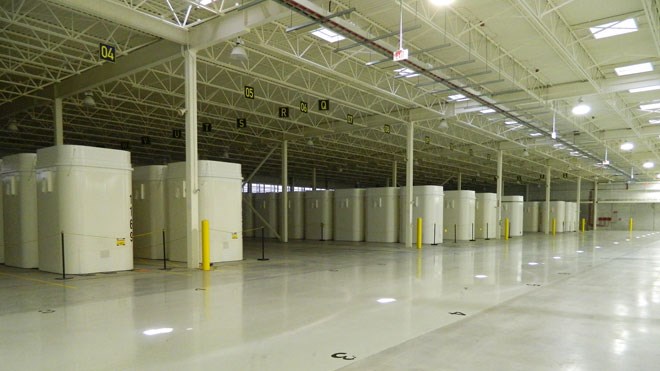Grand Council Chief Patrick Wadahbee of the Anishinabek Nation pledged support to the Saugeen Oijbway Nation in that First Nation's opposition to a plan to bury nuclear waste under Bruce County.
In a May 13 news release, Wadahbee said he shares Saugeen's Chief Vernon Roote's concern about the nuclear waste's impact on future generations.
“The uncertainties and risks are too great for the Anishinabek Nation and Ontario citizen to consider,” Wadahbee said. “We have passed a resolution ... saying 'The Anishinabek Nation stands united in opposition to any deep geological nuclear waste repositories within our territory.' ”
Ontario Power Generation proposes to bury 200,000 cubic metres of low- and intermediate-level radioactive waste from its nuclear power plants in a thick layer of limestone 680 metres below ground, about a kilometre from Lake Huron. The company says the rock is so solid and stable it will contain any possible leakage of harmful radioactivity.
Chief Roote is not convinced.
“If something were to happen, if a leak occurs, I wouldn't want to be drinking the water downstream, that means the balance of Lake Huron, Lake Erie and Lake Ontario. Even the USA will be affected,” Chief Roote said.
The two First Nations are not the only groups opposing the plan. The group Nuclear Waste Watch issued a released on May 14 saying 100 public interest groups are also concerned about the plan, which they called “deeply flawed,” and are calling on Ontario, which owns Ontario Power Generation, to oppose the plan as well.
In early May, a panel appointed by the federal Minister of the Environment and the Canadian Nuclear Safety Commission in 2012 issued its final report on the review of Ontario Power Generation’s proposed Deep Geologic Repository for Low and Intermediate Level Radioactive Wastes.
Based on the scientific consensus from that process, a Joint Review Panel (JRP) recommended that the federal minister approve the proposed repository.
The Anishinabek Nation established the Union of Ontario Indians as its secretariat in 1949. The UOI is a political advocate for 39 member communities across Ontario, representing approximately 55,000 people.
Join Sudbury.com+
- Messages
- Post a Listing
- Your Listings
- Your Profile
- Your Subscriptions
- Your Likes
- Your Business
- Support Local News
- Payment History
Sudbury.com+ members
Already a +member?
Not a +member?
Sign up for a Sudbury.com+ account for instant access to upcoming contests, local offers, auctions and so much more.
